Education
Classrooms: How should they change with the times?
PARVATHY JAYAKRISHNAN invited students to share how they envisioned their classroom and ideal teaching methods
Published
7 years agoon
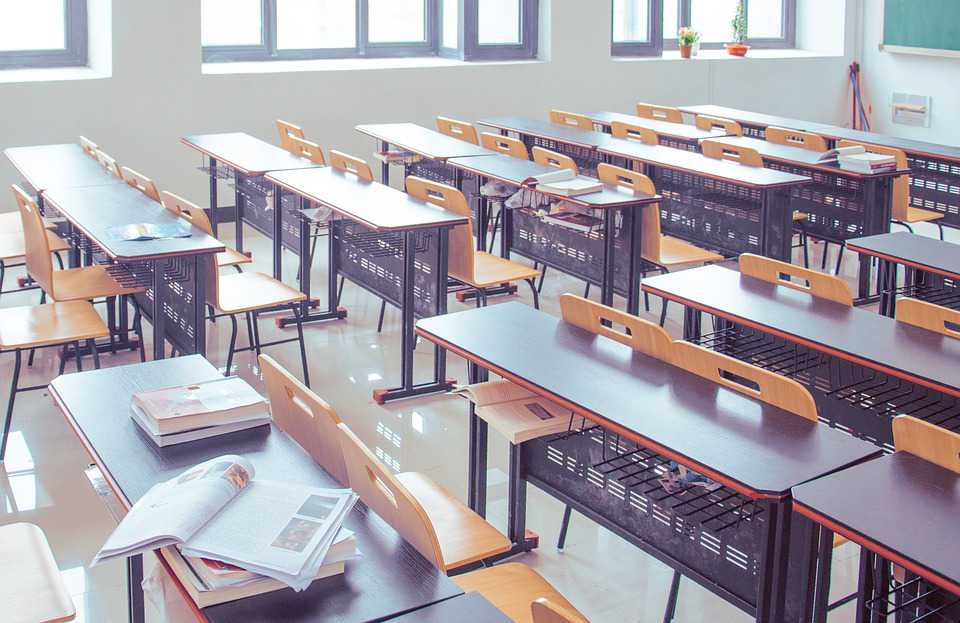
Technology is everywhere. What it truly implies is that knowledge is there right at your fingertips. Paper maps have been replaced by Google maps, if you want grocery, you order online, to get the latest news, you subscribe to it on your smartphone. With digitisation replacing manual work in most areas of use, it is inevitable that the role of a teacher using traditional methods of teaching will soon become redundant. With most teachers themselves having learnt in the blackboard-bench set-up, it is a change that they have to adapt to and embrace to make classroom learning more effective.
With ‘flipped classrooms’ taking over traditional ones, teachers are slowly making progress in modifying their teaching methods.
A flipped classroom is an instructional strategy and a type of blended learning that reverses the traditional learning environment by delivering instructional content, often online, outside of the classroom. It moves activities, including those that may have traditionally been considered homework, into the classroom. In a flipped classroom, students watch online lectures, collaborate in online discussions, or carry out research at home while engaging in concepts in the classroom with the guidance of a mentor.
Excited about sharing their views, students from schools across India spoke up about how they want their classrooms to be and what are the changes in the method of teaching that can be adopted to include technology…
Interactive discussions, fewer tests
“No longer are classrooms restricted to teachers and books, as technology has changed the face of classrooms. With everything in the syllabus easily available online, students no longer need to carry books, thus reducing their load to school. Instead, they can just carry a laptop or a tab. Teachers can use projectors to highlight contents and use television to show informative documentaries. They can also use computers to prepare charts and graphs to disseminate information in a nutshell. Visual information in the form of charts and videos help students to understand concepts better. Smart boards are also widely used in schools nowadays, which reduce time wasted in teachers writing information on the board. The use of technology makes the classroom more interactive and colourful, thus making it easy to learn and more interesting to the students. And since this generation was brought up with technology all around them, using it in education will make them feel at ease. As the syllabus content is all online, students need not buy or print it again, as they can just see it on their tabs, or on the smart board.
Although, I wouldn’t be telling the truth if I said that the blackboard-benches format is not completely relevant today. I mean, it has been used for so many years, so many generations, and has helped students learn. But as the years go on by, everything is changing, and so should the method of teaching. So the switch-over to electronic media is the right thing to do. The blackboard-benches format gives a primitive feel to the class and the children feel lackluster. In this format, the teachers have to put extra energy and creativity to capture the interest of the pupil. It is also time consuming as the teacher has to spend time writing everything on the board. But one thing that this format does is the bonding between the teacher and the pupil. Technology cannot have such a great impact on a students’ life as a teacher does.
If classrooms are to be made interactive, students should be given activities related to the topic taught so that they understand the concept better. Emphasis should be laid more on teaching subjects and coordinating it with everyday activities, so the student can implement it on a daily basis or at least when required. Just learning theoretically is no longer relevant in today's world. Technology is fast changing, so quick thinking and implementing is essential to survive in this competitive world. Students should be encouraged to think differently and discuss their ideas with each other to lay the foundation for team work.
I’m glad that many teachers today encourage students to refer to and study content online. They too are updating their topics with recent developments in technology. Surely integrating these external learning systems with the school system will help students learn better. Just the idea of being tech-savvy makes the student thrilled. YouTube channels often offer unique and easy to understand techniques for students to apply in their exams. They provide an alternate way of teaching from the way it is usually taught in class, if students don’t exactly grasp the main concept. Online teaching usually explains concepts based on problems encountered in daily life, so the concept is better understood with its relevance.
In my dream class, there wouldn’t be any tests, or at least not as often. I would rather have interactive discussions with my co-students in which the entire class participates and everybody gets to air their opinion. Teachers should explain concepts with live demos or 3 dimensional models to have a better impact. Instead of writing, they should present the matter in powerpoint presentations thus reducing time delay. After explanation, they can show us some documentaries which will inform us how advanced the concept has grown today. I would also like spacious rooms with comfortable seating and colourful walls, with no restrictions on movements because if I am not comfortable, I wouldn’t be able to concentrate on the class.”
Adnan Ashriya
Class XI
Alpha Cambridge International School,Trichy
Making the classroom inclusive
“This is the 21st century and the nation is blooming with new technologies. Turn any side and you can find at least one thing which is automatic or it works on AI (Artificial Intelligence). While we have embraced it in multiple applications, why can’t we use it for our education? Education and Artificial Intelligence are two tracks which we can combine to make our learning better. Why should we carry heavy books and notes to school when we can have our content in our portable electronic gadgets at one swipe? Tests and homework can be done online and the students can have their own login ID and password to make it secure enough.
The classroom can be made inclusive by creating an academic support, a change in our curriculum, adjusting ranking calculations, creating a respectful school community and create a space for discussion.
In my dream classroom, blackboards would be replaced by smart TVs, our books and notes will be replaced by our own laptops, students will have their own pods and working spaces, they will have their own personal and customised lockers. They will have access to their phones only when allowed and they are free to access the range of e-books in the school’s website.”
Aparna
Class XI
Alpha Cambridge International School,Trichy
Tech should not replace teachers
“With the syllabus content easily available online, we can make the best use of improved technology in our classrooms. Technology should not replace teachers. Its main use is to enable students learn better and stimulate individual learning. This can be done by introducing tab-oriented learning in classrooms.
A classroom must have a black board in which concepts can be explained well to the students. In a classroom which is very advanced, blackboards can be replaced with smart boards in which teachers explain the concepts in the form of modules.
An inclusive classroom is a general education classroom where children with different abilities, capabilities and disabilities learn together. The class can be made by providing assistance to individual students. Another key aspect of an inclusive classroom is accessibility. Group learning can also be encouraged to make sure that every student of the class cooperates with one another.
Today, teachers are open to students learning from and discovering new YouTube tutorials or education apps. Integrating an external learning system provides better understanding of the concepts. But this alone is not going to help out, teachers have to take the children to the labs and show live experiments. But of course education apps provide students extra notes to learn and they are able to score good grades in examinations with the help of these apps and tutorials.
My dream classroom should be like heaven on earth which will contain a comfortable cushion chair with a table and every student needs to have a separate locker in which their things can be kept safe. The classroom should allow students to have their own laptops. The teacher should be so friendly with the students and they should give a few chances for them to make mistakes. There has to be a relaxation time of 10 minutes after every period. Books should not be carried; everything should be taught online and assignments also should be done online.”
Evangeline Esther J
Class IX
Alpha Cambridge International School,Trichy.
Switch to e-books
“Majority of Indian schools do not make use of all of the modern technology available via laptops and tablets. We carry cartloads of books and notebooks to and from school. If you lose a textbook or notebook, you may have a hard time learning in school and studying for exams. But, all of these textbooks are available online, so all you need is a tablet or a computer, and you can have access to those textbooks anywhere and at any time. You don’t have to worry about losing your textbooks. E-books are much cheaper too plus you are helping the environment by not using paper. So, from some of my personal experiences in the USA, I feel classrooms should provide students with tablets/laptops, and allow them to access textbooks using the device. Notebooks can also be replaced with tablets/laptops because there are free programs available like Google Docs (which I am using now), which allow you to type notes and access them from any device with the same Google Account and an internet connection, you can also save some documents to your computer in offline mode.
Blackboards and benches are not only boring but also unhelpful, they only allow you to write on them and they don’t allow for any interaction. Smart boards, on the other hand, are much more relevant today, a smart-board is basically a large TV, the size of a blackboard, which acts like a tablet, you can use it to play games, write things (using a program, smart-board markers and dusters), you can play videos on it, and write on the video/PPT, and do everything you could possibly do with a tablet, you just need a computer and cable. These smart-boards are very intuitive and attractive; they can keep students actively participating in the class and supplement learning. It may be a bit expensive but the advantages outweigh the cost. Benches should be replaced with individual tables and chairs arranged in groups for easier discussions.
The use of technology, in the right way, can even make the most boring lesson intuitive; there should be a balance between fun technology and learning. For example, if you are sitting in a biology class with a blackboard, you may be bored. But think about this, what if you had a tablet, which showed what the organ looked like and how it worked, while your teacher was showing a video on a smartboard, you and your friends were having an engaging discussion about this organ, and your tablet is taking notes based on what the teacher was saying based on speech recognition. That sounds much more fun and intuitive right? If every classroom was like this, everyone could do well in school, through a balance between fun and learning.
I feel, personally, that in my school, that teachers are not very open to students learning from YouTube videos on their own. The teachers do show us videos, but are not very encouraging towards us learning from YouTube videos that we choose. At my school, we do not use educational apps very much. But when I was in the USA, in my school, we were provided with MacBook Airs by the school, we did not have much-written homework at all! We were asked to watch YouTube videos and write about them, do lessons on apps like Khan Academy, and more than all of that, our teachers encouraged us a lot to go out and learn things ourselves on educational apps and share useful YouTube videos that we found with the whole class, this made learning much easier, more fun, and much more intuitive. I was able to learn things easily with the help of these apps, programs, and websites. By using computers more, I also learned how to type quickly and how to search the web effectively.
My dream classroom is not really a classroom; it is more of a system, which is followed by Middle Schools in some western countries. It is a system where the students go to different classrooms and attend class, they are provided with lockers to store their books and personal items. What I would like the individual classrooms to have is a SMART Board 7275 Pro, I would like for the students to be provided with Macs, the students should be seated in groups with individual desks and chairs, and the room should have some board games and cards if we finish early.”
Ishaan Masilamony
Class VII
Alpha Cambridge International School,Trichy
Reduction in technology
“We embrace the benefits of living in a high tech world—with high tech classrooms already, in my opinion. It’s high time we reduce the use of technology during sessions with teachers which includes a non-virtual conversation with a complete understanding of each other. I definitely prefer the ancient way of teaching that had more practicality and more physical manoeuvre than the use of smart Televisions and iPads. I feel that these gadgets are driving children to addiction and isolation, with most of them living in a hypothetical world.
Use of technology in education has come a long way since the earliest times of human civilization. While embarking on aids with advanced technology, we need to take full cognizance of the lessons from the past, striking a balance between embracing new methods of teaching and learning while holding on to the timeless principles of education.
Lessons can be enhanced with the right video. Something visual and entertaining that speaks to the subject the teachers teach breaks up the monotony of a lecture, brings some fun into the lesson, and keeps us more engaged and interested in the subject.”
Jyotsna
Class IX
Alpha Cambridge International School,Trichy
Getting interactive with technology
“Teachers have to rethink their teaching methods, as this is a flipped classroom we are talking about. Students' expertise in online communication can play a major role here. Letting the students create, collaborate and get interactive with technology can make their learning a whole lot fun. Adding a few simulators in higher grades would be good too.
Living in the 21st century, blackboards aren't exactly the first thing that comes to everyone's minds when given a choice between black and white boards. When someone prefers an older technology to a newer one, there's usually both a utilitarian reason and an aesthetic or nostalgic reason. Blackboards are better tools than whiteboards especially at showing processes, as they force teachers to work more slowly and deliberately and think, whether they are going through a complicated problem, or just simply noting down thoughts and ideas.
Making classrooms inclusive can be a piece of cake if thought thoroughly, by taking each of the classroom activities in mind. Electronic books, speech software etc. can be brought in for "reading", whereas grammar or spelling checkers, word processors etc. can be a part of "writing". There can also be eye glasses and eye magnifiers for "vision" too.
Honestly, not all teachers encourage technology to interfere in education but there are an equal amount of teachers who do embolden smart learning which makes their lectures immensely exciting. Adding a few of these "high tech" procedures, will not only help other students in their learning, but also make schooling fascinating.
First thing, my dream classroom won't have any of the hard table and chairs we sit on, instead it would have plush and comfy chairs with every student having their own study space which they go to after every lesson for a 10 minute break to revise everything they learnt in the past hour. My classroom will be 10 times the size of a normal classroom inclusive of a small "your zone" where a person can go relax and come back during intervals. Smart tables in the main space for learning and will be placed where interaction between the students and teachers can be facilitated, not forgetting the podium upfront for class seminars and activities.”
Shridhi Singhvi
Class IX
Alpha Cambridge International School,Trichy
Real-world problems in the classroom
“An important use of technology is its capacity to create new opportunities for curriculum and instruction by bringing real-world problems into the classroom for students to explore and solve. Technology can help to create an active environment in which students not only solve problems, but also find their own problems. This approach to learning is very different from the typical school classrooms, in which students spend most of their time learning facts from a lecture or text and doing the problems at the end of the chapter. Learning through real-world contexts is not a new idea. For a long time, schools have made sporadic efforts to give students concrete experiences through field trips, laboratories, and work-study programmes. But these activities have seldom been at the heart of academic instruction, and they have not been easily incorporated into schools because of logistical constraints and the amount of subject material to be covered.
Traditional blackboards can be used for geometry, botany subjects where the lecturer has to explain with a drawing. But I feel newer methods of teaching are good for the students to understand subjects better.
In my dream classroom, I will ensure that work flows throughout the classroom. I will create a place where students can meet and feel secure – students learn from each other, they need a consistent environment where they can have face-to-face interactions. I would place the teacher's desk at the back of the room rather than the front- this lends the classroom to maximizing student learning through communication, reflection and reinforcement rather than the traditional "chalk and talk" setup
Of course yes, I would surely exclude the system of memorizing and vomiting and I would completely encourage the use of technology as much as possible, not only for easy access but also for interaction between students.”
V Deepika
Class IX
Alpha Cambridge International School, Trichy
Knowledge over marks
“Our classrooms can be made progressive by integrating technology into our teaching in order to make it as easy as possible for the children to learn and in order to
give the students another perspective of a topic being taught. We can also use web services such as Google Classroom and Microsoft Teams to remind students of
homeworks and assignments by posting them online, rather than the old school diaries.
The blackboard-benches format is irrelevant in today’s culture and in fact, the old school system hinders students from learning the subject matter in an effective way. Using blackboards for subjects such as Physics, Geography, Chemistry, and many more does not paint a wholesome picture and sometimes even leaves the students confused since they can not completely understand the concept. By saying so, I’m not stating that black boards should be completely eradicated, instead, blackboards should be used as a supplement to a more digital classroom.
The best way to make the classrooms more inclusive is to govern the school pupil using love and friendliness instead of instilling fear. By this I mean that, the students should have the freedom to do what they want in order to gain the needed experience from school life, rather than just adhere to preset guidelines in order to pass a set of papers. The school staff should only be there to guide students in the right direction when they veer off, rather than define a strict path for them, which they have to navigate as per the wishes of the staff. The classrooms can also be made more friendly by decorating the walls with posters, letting students wear appropriate yet colorful dresses of their choice once or twice a week, and letting them choose what they want to learn from an earlier stage of their educational careers. I think the teachers nowadays are very open to outside help from multimedia sources, however, there are some teachers (very few) who are against this, and even demand their students to learn traditionally. I think that integrating multimedia sources into our schools is a progressive and crucial move that schools all over the world need to make. There are apps now such as Byju’s learning app, which supplement the students’ understanding of concepts, and in many cases even aid the students in clearing any confusions that may have risen by the old school, traditional style of teaching. Although schools should use educational apps to supplement their teaching, they should be careful not to use applications which are only focused on making a profit, rather than help the students. Schools should consider using a source that is free for all and which is non profit such as Khan Academy in order to guarantee that their students can get the best that is available as of right now. Lastly, the schools should also be careful only to use the multimedia sources as a “supplement” to the education given in school, rather than using it as the primary source of education for the students. My dream classroom is one where, I can learn whatever I want in a way that is tailored for me, rather than me having to adapt to the system. My dream classroom is one where, I can have a teacher like Aamir Khan from “Taare Zameen Par”, rather than have a teacher like the principal from “3 Idiots”. Finally, my dream classroom is one where, I can go in order to learn and increase my knowledge, rather than go to a classroom to score good marks in the exams and to study in a good college.”
Sricharan Sridhar
Class IX
Alpha Cambridge International School,Trichy
Need to adapt practical learning
“Everybody wants to learn technology, for no doubt technology is mastering this modern world. So why not utilise it effectively? Rather than writing by hand, typing on MSWord allows students to cut and paste, save their work and use spell checkers and thesauruses. First of all, students need edu-pads at schools which should replace notebooks and pens. Surveys show that most children show reduced interest in studies because they are forced to write. Typing and surfing might lighten their workload.
‘Games’ linked with academics are very essential because it is said that playing games activates brain dopamine and improves memory.
‘No Stress Learner’ enables us to be updated even when we are on leave. Lectures by teachers are recorded and played later, so that we never miss a point due to illness or any other reasons. Technology might be helpful but has demerits too- high cost, availability, distraction etc. If these factors are checked, then technology becomes a great boon for future learning.
Exams should be excluded from schools because the main aim of exam is assessment. Students should be allowed to frame their own queries and doubts and indulge in self-assessment. Students should not be forced to learn a subject which they are not interested in. Rather they should be encouraged to acquire intense knowledge in the subject of their choice. Entrance exams should be practical. Medical and Engineering professions are not jobs of theory but of practice. Finally, schools should adapt practical learning. So, my dream classroom should be able to satisfy these expectations.”
Swarupaa Sree S
Class XII
Alpha Wisdom Vidyashram
Quest for application-oriented learning
“In the olden days, the classroom atmosphere was built around the ‘chalk and talk’ method but this rigid practice has been altered dramatically in the recent years. This factory model of learning has now changed and thus the 21st century requires a learning system which indulges in the use of technology. Students should be familiarized with tools like, ‘Word Processing Tools’, ‘Presentation Software’, ‘Course Management Tools’, Lecture Capture Tools’ etc. to enhance their learning. They must be given free access to educational apps available online to boost their learning. Opportunity must be created for students to participate in online seminars, discussions and conferences. Virtual field trips to various places could give students detailed idea of what is taught in the lessons because visuals speak louder than words. Anytime and anywhere learning is possible with purposeful technology.
The blackboard-benches format, although traditional, is still relevant and has ease of presentation. Calculations, diagrams, sketches, maps can be presented effectively on blackboards. Every tutor may not be familiar with new technology but the traditional method is handy to all. Moreover, this method is inexpensive therefore is accessible to schools of any category and any category of students. The blackboard-benches classroom develops interaction between teacher and students and among students.
In ancient times, the ‘Gurukulam system’ enhanced knowledge and honed the skills of the students. But today unfortunately, education comprises syllabus completion, projects, assessments, homeworks, exams etc. within the four walls. A classroom must adapt practical and application-oriented learning. For example, learning related to agriculture, working of drones, rockets etc. should be practical than theoretical. My dream classroom should have access to facilities such as ‘Cloud Technology’ and ‘3D Printer’ to meet the needs of new generation learners. Using holograms in classroom teaching may seem practically difficult but introducing the same in small scale will help to teach the children how it works. Principles followed by the Japanese educational system are wonderful. Our educational system too should prepare the students for their career from childhood rather than just producing the graduates. Students must be taught values and how to respect nature and fellow humans rather than preparing them for exams. Classroom should not only have books and blackboard but also have amenities to learn traditional arts. Digital development in classroom alone will not help the learning to be effective. So, my dream classroom must be an inclusive classroom with all possible features to supply to the needs to satisfy my quest for learning.”
Oviya. S
Class XI
Alpha Wisdom Vidyashram
No more four-walled classrooms
“The syllabus content from online education is extremely useful and it is an easy learning equipment for students in the present generation. Our classrooms will also adapt to this kind of learning by setting up Smart Boards. Teaching on blackboards helped us when we were in smaller classes. In higher classes, it is easier to use the Smart Board System with whiteboard which will attract the students’ mind to capture the syllabus content easily.
Today, we are happy that a number of teachers have started posting content on their YouTube channels for their students to benefit from. Some students may have doubts about a topic taught and may feel shy to express it in class. Now, they can easily find answers to these question by referring to external learning systems.
Our dream classroom should be a “pathway for making students future nation builders”. Great philosophers like Albert Einstein, Isaac Newton and Mahatma Gandhi learnt about life from their exposure to the society and not by learning in classrooms. We believe that it is time to end the concept of a four-walled classroom.”
Afzar A (Class XI) and Sharlene A (Class XII)
Alpha Plus Matriculation Higher Secondary School, Trichy
Free area minus distractions
“Rethinking to the 19th century (inverting the traditional ways) would be a good choice when comparing the way of studies. Making the students feel relaxed can reduce the stress of everybody. A whole core of new subjects ought to be included due to tomorrow’s way of work. Books can be optional because everyone might not be comfortable with online syllabus. Doing projects practically from online tutorials is a good idea too. Beautiful places that can make the student feel good to be at school with art, plants, music (when needed), comfortable seating with fast internet access would be all that is needed. The ideal classroom would be like a free area with no distractions and teachers cannot be excluded because no kid is perfect, so an experienced guide is needed.”
Mir Zahid Ahmed
Class IX
Alpha Cambridge International School,Trichy
You may like
-
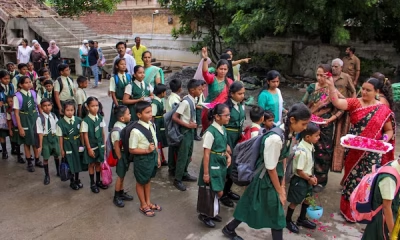

Maharashtra: Over 8,000 Villages Lack Schools, CCTV Compliance Still Patchy
-
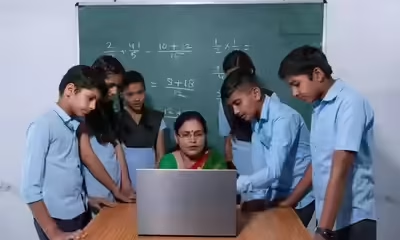

Haryana to Offer Free After-School Coaching for JEE, NDA Aspirants
-


Telangana CM Calls for Overhaul of Intermediate Education in Telangana
-


Indian Astronaut Shubhanshu Shukla to Connect with School Students Live from Space
-
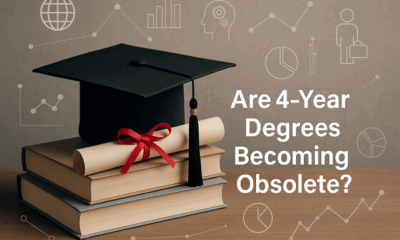

Are 4-Year Degrees Dead? Nikhil Kamath and the WEF Say Lifelong Learning Is Here to Stay
-
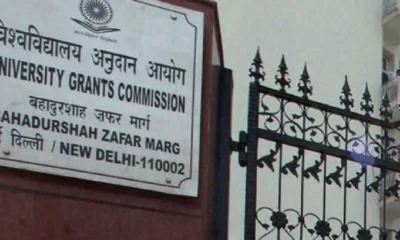

UGC Cracks Down on 89 Institutes Over Anti-Ragging Failures
-


Government Doubles Down on Coaching Centres: New Panel Signals Stronger Regulation Ahead
-


CBSE To Conduct Board Exams Twice for Class 10 from 2026
-


How to Win Back Wandering Minds: Post-Summer Edition
-

Tripura Becomes Third Indian State to Achieve Full Literacy
Education
Maharashtra: Over 8,000 Villages Lack Schools, CCTV Compliance Still Patchy
Published
14 hours agoon
July 3, 2025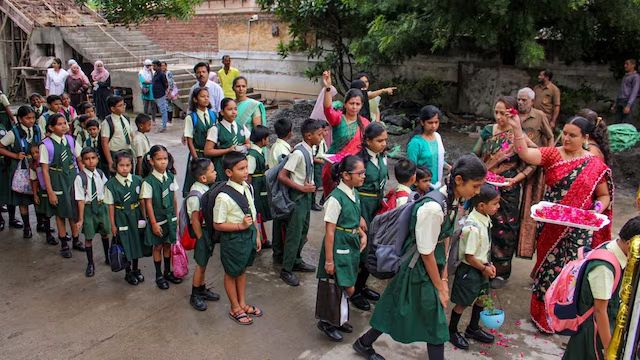
More than 8,600 villages in Maharashtra remain without a single school, according to a recent report by the state’s Women and Child Development Department.
The gap isn’t just in classrooms. Nearly half of all government schools in the state have failed to install CCTV cameras, despite a Bombay High Court directive issued over a year ago mandating the move for student safety.
The numbers come from an internal state government communication that has now surfaced publicly, raising concerns about Maharashtra’s compliance with both the Right to Education (RTE) Act and judicial orders.
While urban education garners attention with smart classrooms and NEP pilot projects, rural Maharashtra still contends with the fundamentals: no schools, no surveillance, and often, no real learning environment.
The CCTV issue, though seemingly minor, ties directly to concerns about student safety and teacher accountability, especially in government-run schools where complaints often go unaddressed. The High Court directive had explicitly asked for CCTV cameras to be installed in all government school premises. Yet, as per the report, only 53% of schools have complied so far.
Educationists and civil society groups have pointed out that the absence of schools in over 8,000 villages violates the RTE Act’s basic requirement of ensuring a primary school within a 1-km radius of every habitation. These gaps disproportionately affect students from marginalized communities who lack access to private schooling options or reliable transportation.
While the state has announced new digital initiatives and curriculum reforms, this data signals the urgent need for parallel investment in basic school infrastructure and safety mechanisms, especially in rural and tribal regions.
If Maharashtra is serious about achieving educational equity, the solution isn’t just in policy blueprints or digital dashboards — it’s in ensuring that every child has a safe, functional school to go to.
Education
Haryana to Offer Free After-School Coaching for JEE, NDA Aspirants
Published
15 hours agoon
July 3, 2025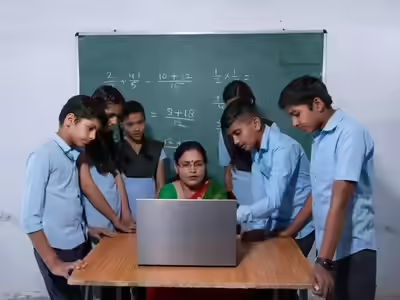
In a push to democratize access to competitive exams, the Haryana government has announced a free after-school coaching initiative for meritorious students in government schools. The scheme will initially roll out in 26 educationally backward blocks, targeting students aspiring to crack entrance exams like JEE (Joint Entrance Examination) and NDA (National Defence Academy).
The move is designed to level the playing field between private and government school students, many of whom lack access to the coaching ecosystem often necessary for success in high-stakes exams.
According to the Education Department, only those students who score above 60% in Class 10 and rank among the top 500 in state-level merit lists will be eligible for the coaching. The classes will be held in selected schools after regular hours.
Officials said that around 100 government school teachers have been identified to undergo training from expert faculty members from IITs and coaching institutions, ensuring quality instruction that mirrors national standards.
The initiative will be implemented in partnership with the national not-for-profit organization, the Rashtriya Avishkar Abhiyan, and aims to align with the broader goals of the NEP 2020 by enabling access, equity, and excellence in education.
By empowering students with structured coaching support—often inaccessible due to financial or geographic barriers—the Haryana government signals its intent to redefine what government schooling can offer in a competitive academic landscape.
Education
Telangana CM Calls for Overhaul of Intermediate Education in Telangana
Published
19 hours agoon
July 3, 2025
In a review meeting held at the Command Control Centre, Telangana Chief Minister A Revanth Reddy instructed education officials to take urgent steps to ensure students who complete Class 10 successfully transition into and complete their Intermediate education.
This directive stems from a persistent gap: while many students clear the Class 10 SSC board exam, a sizable number fail to complete the next academic stage. The CM has asked for a detailed study of the education policy for Classes 9 to 12 to identify where the system is failing and how it can be made more responsive to students’ needs.
Reddy emphasized that Intermediate education is a crucial link in helping students build careers and that adequate career guidance must begin at the college level. He directed officials to work on specific interventions to improve pass percentages in the intermediate board exams.
The review also touched on infrastructure: from proposing that every school fly a national flag to demanding regular updates on the construction progress of Young India Residential Schools. The CM expressed concern over the slow pace of infrastructure projects and instructed officials to accelerate tender processes, especially for the Veeranari Chakali Ilamma Mahila Vishwa Vidyalayam (Women’s University) expansion.
Funding was another key focus, with Revanth asking departments to coordinate with the Centre to ensure that Telangana receives its full share under centrally sponsored schemes.
The policy emphasis is clear: a push for a seamless Class 10 to Intermediate pipeline, improved exam outcomes, stronger infrastructure, and better career preparation for young learners.
Education
Indian Astronaut Shubhanshu Shukla to Connect with School Students Live from Space
Published
3 days agoon
July 1, 2025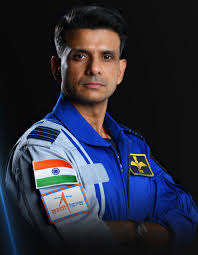
Indian astronaut Shubhanshu Shukla, currently on a 14-day scientific expedition aboard the International Space Station (ISS) as part of the Axiom-4 mission, is scheduled to interact with school students and ISRO engineers on July 4.
The communication will take place via ham radio, through a telebridge set up at the U R Rao Satellite Centre (URSC) in Bengaluru. The session is facilitated by the Amateur Radio on the International Space Station (ARISS) programme, which enables students to engage with astronauts in orbit.
The interaction is scheduled for 3:47 PM IST and will offer participating students an opportunity to ask questions directly to Shukla, who is joined on the mission by three other astronauts.
Shukla has been conducting various scientific experiments during his stay aboard the ISS. These include deploying and imaging space microalgae samples, which are being studied as a potential food source for long-duration missions. He has also participated in the Neuro Motion VR project — involving brain activity tracking through VR tasks in microgravity — and contributed to the Telemetric Health AI study, which uses biometric data and analytics to study cardiovascular and balance changes during spaceflight.
The Axiom-4 mission, organized by Axiom Space, focuses on scientific research in space with potential applications in both space exploration and Earth-based health systems.
Education
UGC Cracks Down on 89 Institutes Over Anti-Ragging Failures
Published
4 days agoon
June 30, 2025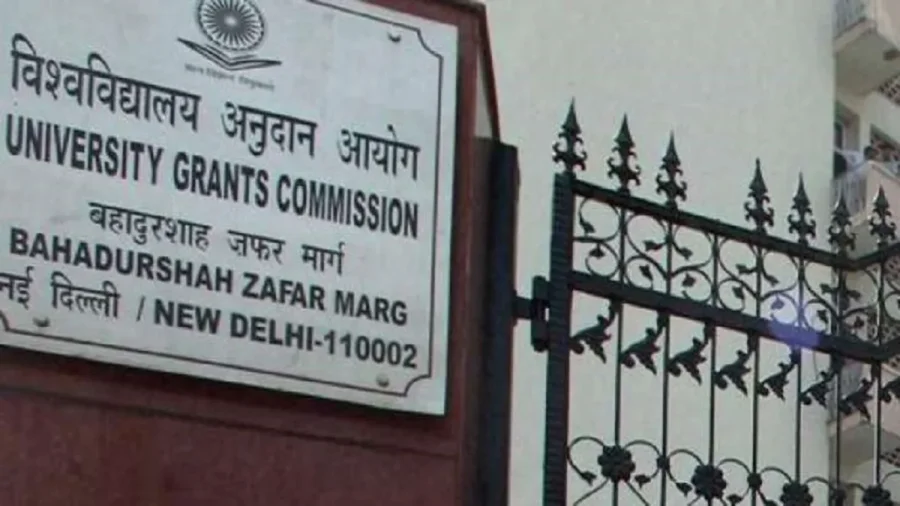
In a firm push for accountability, the University Grants Commission (UGC) has issued show-cause notices to 89 higher education institutions for failing to comply with mandatory anti-ragging regulations. The defaulters include some of India’s most prestigious institutions—17 of which are Institutes of National Importance—including IIT Bombay, IIT Kharagpur, IIT Hyderabad, and IIM Bangalore.
These institutions, despite repeated advisories, failed to submit the required anti-ragging undertakings from students and institutional compliance reports. The lapses have been termed a “significant violation of regulatory norms” by the UGC, raising serious concerns over student safety and campus climate in India’s top educational spaces.
A notice dated June 9, signed by UGC Secretary Prof. Manish R Joshi, has directed all 89 institutions to respond within 30 days by submitting comprehensive compliance reports, securing online anti-ragging affidavits from all students, and detailing both current and planned anti-ragging mechanisms.
If the institutions fail to act within the deadline, consequences may include withdrawal of UGC grants, public disclosure of non-compliance status, and potential derecognition or withdrawal of affiliation.
Among the list of defaulters are the Indian Statistical Institute, Kolkata, AIIMS Raebareli, Aligarh Muslim University, RGIPT Basar, and several National Institutes of Design. The issue becomes even more urgent in light of recent ragging-related incidents and an increasing perception of campus hostility. “Institutions must treat this as a matter of utmost urgency. Your prompt compliance will be essential in upholding institutional responsibility towards student welfare,” reads the UGC’s statement.
Ragging has no place in modern education, especially not in a country positioning itself as a global knowledge leader.
In 2025, with India’s education sector expanding in reach, recognition, and responsibility, compliance with anti-ragging norms shouldn’t require reminders. It should be a given.
As the world watches Indian institutions climb global rankings, student safety and well-being must remain central, not as compliance checkboxes, but as part of the educational culture we aspire to build.
Education
Government Doubles Down on Coaching Centres: New Panel Signals Stronger Regulation Ahead
Published
1 week agoon
June 26, 2025
In a decisive step toward reforming India’s fragmented senior secondary education system, the Ministry of Education has constituted an 11-member high-level committee to address the mushrooming of dummy schools and the unchecked influence of coaching centres. Chaired by Higher Education Secretary Vineet Joshi, the committee includes representatives from CBSE, NCERT, and faculty from IITs in Madras, Kanpur, and Trichy.
The move is seen as part of a growing policy consensus across central and state governments to reclaim the authority of schools, following recent crackdowns and reforms aimed at regulating coaching institutions and curbing the dummy school culture that sidelines holistic education.
Dummy schools — where students are officially enrolled but rarely attend — have emerged as a by-product of India’s competitive entrance exam culture. These institutions prioritise JEE, NEET, and CUET preparation through coaching classes, while students disengage from formal schooling. The CBSE’s March 2025 advisory warning that students from dummy schools could be barred from board exams marked a serious turning point in policy enforcement.
Earlier this year, the Delhi Government carried out inspections in over 600 private schools, issuing notices to at least 10 for running dummy setups. The move followed media reports and parental complaints about students being denied regular schooling in favour of coaching arrangements.
Meanwhile, the Rajasthan Cabinet approved a bill in April 2025 to regulate coaching centres operating in Kota and other education hubs. The legislation aims to curb exploitative practices, mandate mental health counsellors, and prevent coaching centres from operating without a minimum infrastructure standard—prompted by rising student suicides in the state.
Central Framework and Industry Oversight
In February 2025, the Central Government announced a new framework for coaching centres, proposing registration, transparency in fee structures, and guidelines on advertising to prevent misleading claims. Together with the current committee’s formation, these reforms indicate a systematic tightening of oversight at all levels.
The new panel’s mandate is broad. It will investigate:
- The socio-academic reasons behind the rise of dummy schools
- The misalignment between school curricula and competitive exams
- The impact of coaching on student well-being and critical thinking
- The need to promote alternate career pathways beyond engineering and medicine
- Regulations around coaching advertisements and contract practices
A National Rethink on the Purpose of Schooling
Education experts like Dr Ameeta Mulla Wattal have welcomed the initiative, calling it “a vital opportunity to restore the sanctity of school education.” The rise of coaching centres as parallel systems, she noted, has come at the cost of creativity, values, and even mental health in adolescents.
As India contemplates the future of its learners, the Ministry’s recent actions suggest a serious intent to bridge the gap between boardrooms and classrooms. Whether the new committee’s recommendations lead to tangible change remains to be seen, but the signals are clear: education in India must prepare children for life, not just for an entrance exam.
Education
CBSE To Conduct Board Exams Twice for Class 10 from 2026
Published
1 week agoon
June 26, 2025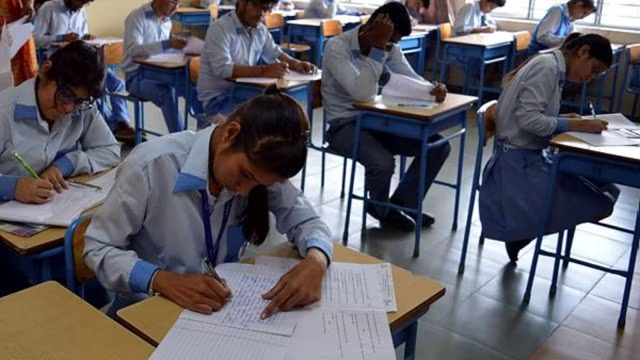
In a move aimed at reducing academic pressure and offering students a second shot within the same academic year, the Central Board of Secondary Education (CBSE) has announced a revised board examination structure for Class 10. Starting from the 2025–26 session, students will appear for two board exams: the first in February and the second in May.
While the February exam will be the ‘main’ board, students who wish to improve their scores in up to three subjects can take the second board exam. Those who fail in one or two subjects may also attempt the May exam under the compartment category. However, those who miss three or more subjects will be marked ‘Essential Repeat’ and have to retake the exam the following year.
Importantly, this is not a semester system. Students must appear for the first exam. The second is optional—meant only for improvement or compartment cases. No additional or new subjects can be added between the two exams.
CBSE has clarified that the structure, syllabus, and pattern of questions will remain unchanged. The results of the first exam will be declared in April, enabling provisional Class 11 admissions. However, the final marksheets and certificates will be issued only after the second exam results are announced in June.
This dual-exam model was opened for public feedback earlier this year and will initially apply only to Class 10. A similar system for Class 12 is being considered but has not yet been confirmed.
For schools, this change will require rethinking academic calendars, counselling processes, and internal assessments, especially for students who may be at risk of needing a second attempt. The move aligns with CBSE’s broader goals of offering students more flexibility and reducing the high stakes of a single board exam.
Education
How to Win Back Wandering Minds: Post-Summer Edition
Published
1 week agoon
June 24, 2025By
Renu Sharma
The dopamine-rich scrolling in late mornings with amorphous freedom has made our zealous students so comfortable that they are re-entering their classrooms with minds tuned to instant gratification, not delayed rewards. Now the challenge isn’t just academics but to re-engage our bud’s attention and curiosity. Neuroscience backed motivation strategies and intentional school design could prove to be a catalyst as it will bring a positive change and enable the students to learn at a better pace.
1. Rewiring the Dopamine rush with 2 Ps, Purpose and Productivity:
Neuroscience says: Where our brains are functional to seek novelty and purpose on their own, during summer break, the buds often lean into adding the activities to their routine which are unpredictable, quick, and rewarding referring back to instant gratification, these activities may include social media, gaming, and chatting anonymously and grateful to internet and inventions, there are plethora of platforms enabling students to be distracted. And then joining back the school with a gradual drip of delayed academic rewards may seem to be a let-down for students.
Actionable tip: We as facilitators have to be the mystery-solvers channeling their energy into productivity, enlightening them with real-world challenges, interdisciplinary projects, or a mystery to solve that taps into their intrinsic curiosity. Novelty may allow us to reset their attention-even primitive changes in surrounding like rearranged desks, learning outdoors, and using the BALA method to utilize infrastructure, can signal a shift in engagement and productivity.
2. Design for Autonomy and Flow
Neuroscience says:
Neuroscience tells us that motivation really flourishes when students feel they have some control over their learning. The brain’s reward system kicks in when choices are part of the equation, especially regarding how tasks are structured or what content is covered.
Here’s a practical tip: give students structured choices, like deciding which book to dive into, which problem to tackle first, or how they want to present their findings. A design that promotes flow—complete with clear goals, manageable challenges, and instant feedback—helps keep students in that ideal zone, avoiding both boredom and anxiety.
3. Rebuild Social Motivation Through Spaces That Connect
Neuroscience tells us that connecting with peers is a huge motivator, especially after the pandemic. Our brains are wired for social interaction, which plays a key role in how we learn and engage emotionally.
Actionable tip: Create flexible seating arrangements or common areas that encourage group work and casual collaboration. Try incorporating daily activities like “curiosity circles” or peer-led problem-solving sessions to foster a sense of belonging and shared learning objectives.
4. Leverage Routines to Rewire Attention
Neuroscience shows that our habits influence our attention. After a summer of scattered focus, students thrive on rhythmic and consistent routines that help retrain their executive functions.
Actionable tip: Kick off classes with familiar “mind-on” rituals — whether it’s a thought-provoking question, a brief reflection, or a quiet sketch — to help anchor their attention. Consistency breeds comfort, and that comfort boosts confidence.
5. Make Joy a Design Priority
Neuroscience indicates that positive emotions can enhance learning by boosting neuroplasticity. When students (and teachers) experience joy, they’re more likely to engage deeply and retain what they learn.
Actionable tip: Infuse joyful moments into the day — through fun challenges, movement breaks, or a bit of humor. Allow time for students to share what excites them. A joyful classroom isn’t just a nicer place to be; it’s also more effective for learning.
Conclusion: To capture wandering minds, we need to understand how motivation truly works and design both our curriculum and learning spaces to support it. When we ignite curiosity, honor autonomy, and weave joy into the experience, even the sleepiest summer brain can come alive again.
This article is written by:

Renu Sharma
Assistant Director – Systems – Indirapuram Group of Schools
Principal – Indirapuram Public School – Crossings Republik
Education
Tripura Becomes Third Indian State to Achieve Full Literacy
Published
1 week agoon
June 24, 2025
Tripura has been declared a fully literate state, becoming the third in the country to cross the 95% literacy threshold after Goa and Mizoram.
The announcement was made by Chief Minister Dr. Manik Saha, citing data from the Understanding Lifelong Learning for All in Society (ULLAS) programme — a flagship literacy and life skills initiative aligned with the National Education Policy (NEP) 2020. The declaration marks not just an administrative achievement, but a generational leap in educational access and community participation.
Tripura’s current literacy rate stands at 95.6%, as per the latest Periodic Labour Force Survey, a remarkable rise from 87.22% in the 2011 Census, and a far cry from 20.24% in 1961.
“This is a historic moment for Tripura. From a 20% literacy rate six decades ago to 95.6% today, we have rewritten our narrative,” said Dr. Saha in a public post. “Through the successful implementation of ULLAS, we have ensured that literacy is not limited to signing one’s name, but includes the confidence to participate meaningfully in society.”
ULLAS, launched under the New India Literacy Programme, targets adult learners aged 15 and above who have missed out on formal schooling. It goes beyond basic literacy to include numeracy, digital and financial literacy, legal awareness, and other essential life skills — all aligned with NEP 2020’s commitment to equitable lifelong learning.
The shift from traditional signature-based literacy drives to functional literacy has allowed Tripura to reach new learners with practical, future-ready tools. The model also offers a compelling template for other states striving to raise literacy rates beyond conventional benchmarks.
Education
Assam Brings Sign Language to Senior Secondary Classrooms in Landmark Move
Published
1 week agoon
June 24, 2025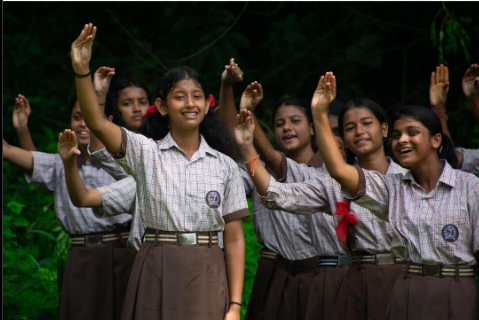
The Assam State School Education Board (ASSEB) has announced the introduction of Sign Language as an elective subject for Higher Secondary (Classes XI–XII) from the current academic year.
Education Minister Dr. Ranoj Pegu made the announcement during the inauguration of a residential AI training programme for teachers at IIT Guwahati. While Artificial Intelligence and Financial Literacy were also introduced as new electives, Sign Language stood out as a critical stride towards making classrooms more accessible to the deaf and hard-of-hearing community.
“This is not just about a subject; it’s about acknowledging communication rights,” said Dr. Pegu, who also unveiled a specially designed AI textbook at the event. The textbook was developed in collaboration with experts from IIT Guwahati and Dibrugarh University. He added that the curriculum reforms are aligned with the National Education Policy (NEP) 2020’s vision of equity, inclusion, and skill readiness.
According to education officials, the rollout of Sign Language will begin in institutions where qualified educators or resource personnel are available. Training for teachers is expected to be scaled up across the coming months. The subject aims to raise awareness about Indian Sign Language (ISL), improve communication access for students with hearing impairments, and sensitise peers to inclusive practices from a young age.
Later in the day, Dr. Pegu chaired a review meeting with officials from the Department of School Education to discuss budget allocations and planning for the 2025–26 academic year. While schemes like the Chief Minister’s Nijut Moina initiative, distribution of bicycles for Class IX girls, and the upgradation of Bodo-medium schools were discussed, the emphasis remained on delivering structural reforms that bridge equity gaps in access and opportunity.
The addition of Sign Language, AI, and Financial Literacy as electives reflects a broader shift in how Assam is reimagining school education — one where life skills, digital literacy, and inclusive values are no longer optional, but integral.
Newsletter

Maharashtra: Over 8,000 Villages Lack Schools, CCTV Compliance Still Patchy

Haryana to Offer Free After-School Coaching for JEE, NDA Aspirants

Telangana CM Calls for Overhaul of Intermediate Education in Telangana

Indian Astronaut Shubhanshu Shukla to Connect with School Students Live from Space

Are 4-Year Degrees Dead? Nikhil Kamath and the WEF Say Lifelong Learning Is Here to Stay

UGC Cracks Down on 89 Institutes Over Anti-Ragging Failures

Government Doubles Down on Coaching Centres: New Panel Signals Stronger Regulation Ahead

CBSE To Conduct Board Exams Twice for Class 10 from 2026

How to Win Back Wandering Minds: Post-Summer Edition
Tripura Becomes Third Indian State to Achieve Full Literacy

Assam Brings Sign Language to Senior Secondary Classrooms in Landmark Move

Delhi Schools to Implement Age 6 Rule for Class 1 Admissions from 2026

Tripura Adds Sex Education & HIV Awareness to Their Curriculum

Four Indian Schools Shine on the Global Stage at World’s Best School Prizes 2024

Centre Urges 7 States to Consider Common Board Amid Alarming Student Failure Rates

IIT Delhi Leads India in the QS Rankings 2026; MIT Tops Globally

Chandigarh, Punjab Lead in School Education Rankings; Meghalaya Trails Behind

Maharashtra Revises Policy on Third Language in Schools, Hindi No Longer Mandatory

From Academics to Empathy: Redefining Academic Success

India Sends 20 Students to Japan Under Sakura Science Programme 2025

Delhi Schools to Observe June as Anti-Malaria Month, Says DoE

Telangana Govt Ties Up With 6 NGOs to Revolutionise Teaching in Govt Schools

History, Identity, and Pride: Books That Make Sense of Being You

Delhi Government Clears Ordinance to Regulate Private School Fees After Protests

Of Formulas and Frames: Why India Must Stop Dividing Science and Art

Is Your School Following These Mandatory CBSE Committees?

CBSE’s ‘Sugar Boards’ Initiative: Tackling the Sweet Crisis in Indian Schools

“Be the Change in a Changing World”: Anita Karwal and Anju Chazot Reflect on NEP 2020
CBSE Warns Dummy School Students May Be Barred from Board Exams

Maharashtra to Regulate Pre-Primary Education with New Law Aligned to NEP 2020

MAHAJYOTI’s Book Distribution Scheme to Empower 7,000 OBC Students Preparing for JEE/NEET & MHT-CET

China Embarks on Ambitious AI-Driven Education Reform to Build a ‘Strong Education Nation’ by 2035

John King’s Book ‘Teacher By Teacher’: A Global Tribute to the Transformative Power of Education

‘Baalpan ki Kavita’ Initiative Launched to Restore Indian Rhymes for Young Learners

CBSE Introduces Mandatory Bridge Course for Classes 6 to 12 in Chhattisgarh Under NEP 2020

Rewriting Ambedkar: Why Students Must Know the Man Beyond the Constitution

CBSE Mandates 50-Hour Annual Training for Teachers, Declares STEM as 2025 Theme

India Bids Farewell to NEP Architect Dr K. Kasturirangan

Pradhan Mantri Rashtriya Bal Puraskar 2025: Nominations Now Open for India’s Young Achievers

Banu Mushtaq’s International Booker Win Is a Wake-Up Call for Indian Schools to Reclaim Literature

NCERT Class 7 Textbooks Updated: Mughals Removed, Focus on Indian Ethos and Pilgrimage

Delhi Government Cracks Down on Dummy Schooling; Over 600 Schools Inspected, 10 Issued Notices

Delhi Approves Landmark Bill to Regulate School Fees Across 1,677 Institutions

The Ethics of AI Art in Education & Nostalgia: The Ghibli Effect

Operation Sindoor and Operation Abhyaas: Navigating School Safety and Student Well-being Amid Rising Tensions
CBSE Revises Class 10, 12 Curriculum: Biannual Exams, New Subjects and Flexible Passing Criteria Introduced

Harvard Stands Its Ground: Harvard Faces ₹18,400 Crore Funding Freeze After Rejecting Trump Administration’s Demands

CUET-UG 2025 Likely to be Postponed, Fresh Dates Expected Soon

Aalamaram 2025: Where Indian Educators Came Together to Grow, Reflect, and Lead

Trump Signs Executive Order to Promote AI Integration in U.S. K-12 Education
SGEF2023 | Special Address by Rama Datt, Trustee, Maharaja Sawai Man Singh II Trust, Jaipur

ScooNews | After Movie | ScooNews Global Educators Fest 2023

Aftermovie | NIES2 UP Chapter | 21 Jan 2023

WEBINAR | Gamification in Education: How Digital Badges Can Boost Student Motivation and Engagement

ScooNews | WEBINAR| Importance of Physical Activity for Children at School | Plaeto

SCOONEWS | WEBINAR | WHY DIGITIZING YOUR SCHOOL IS A MUST | TEACHMINT

Keynote Address | Lakshyaraj Singh Mewar

Anurag Tripathi, Secretary, CBSE at SGEF2022

How schools can nurture every student’s genius

Aftermovie | SGEF2022 | Jaipur

Li Andersson | Minister of Education | Finland

Anurag Tripathi, Secretary, Central Board of Secondary Education (CBSE) discusses NEP2020

ScooNews | Early Ed Asia 2019 | Aftermovie
#PodarECEconf : Pursuing quality ECE

#CBSE Class XII #Results #Highlights

The interesting story of India’s educational system | Adhitya Iyer

A young scientist’s quest for clean water

The Danger of Silence: Clint Smith

National Digital Library of India is an initiative by HRD Ministry

Remembering Kalpana Chawla on her birthday!

Message from Sadhguru for Students!
Message from Sadhguru for Students!

The Untapped Genius That Could Change Science for the Better

Eddy Zhong: How school makes kids less intelligent TEDxYouth@Beacon

#TEDxCanberra : What if every child had access to music education…
Trending
-
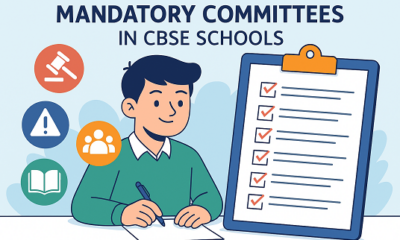
 Education3 months ago
Education3 months agoIs Your School Following These Mandatory CBSE Committees?
-

 Education2 months ago
Education2 months agoCBSE’s ‘Sugar Boards’ Initiative: Tackling the Sweet Crisis in Indian Schools
-
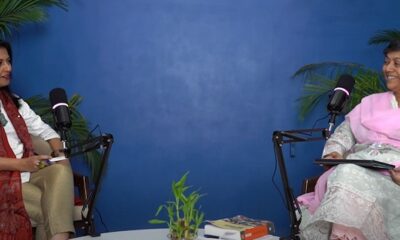
 Education3 months ago
Education3 months ago“Be the Change in a Changing World”: Anita Karwal and Anju Chazot Reflect on NEP 2020
-
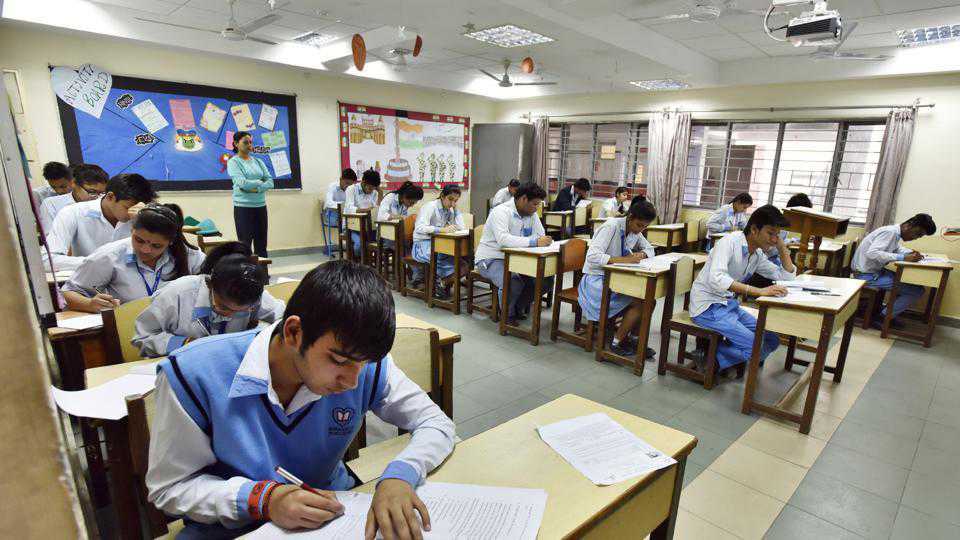
 News3 months ago
News3 months agoCBSE Warns Dummy School Students May Be Barred from Board Exams
-
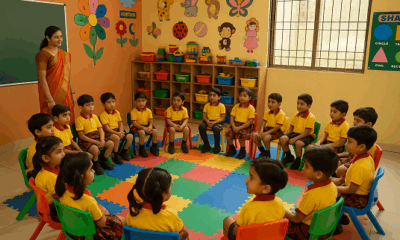
 Education2 months ago
Education2 months agoMaharashtra to Regulate Pre-Primary Education with New Law Aligned to NEP 2020
-

 Education3 months ago
Education3 months agoMAHAJYOTI’s Book Distribution Scheme to Empower 7,000 OBC Students Preparing for JEE/NEET & MHT-CET
-
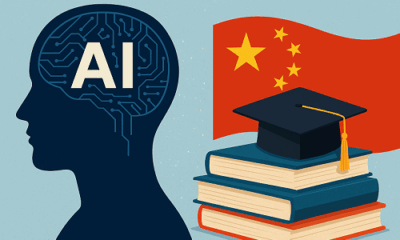
 Education3 months ago
Education3 months agoChina Embarks on Ambitious AI-Driven Education Reform to Build a ‘Strong Education Nation’ by 2035
-

 Education2 months ago
Education2 months agoJohn King’s Book ‘Teacher By Teacher’: A Global Tribute to the Transformative Power of Education
-
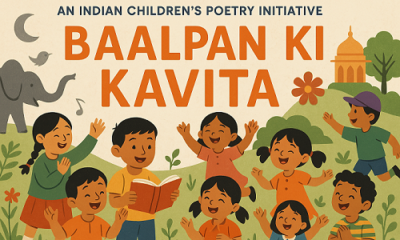
 Education3 months ago
Education3 months ago‘Baalpan ki Kavita’ Initiative Launched to Restore Indian Rhymes for Young Learners
-
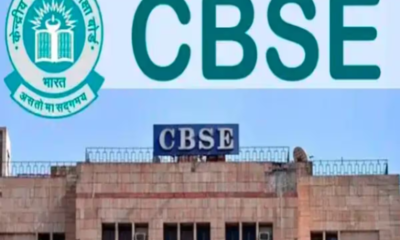
 Education2 months ago
Education2 months agoCBSE Introduces Mandatory Bridge Course for Classes 6 to 12 in Chhattisgarh Under NEP 2020





